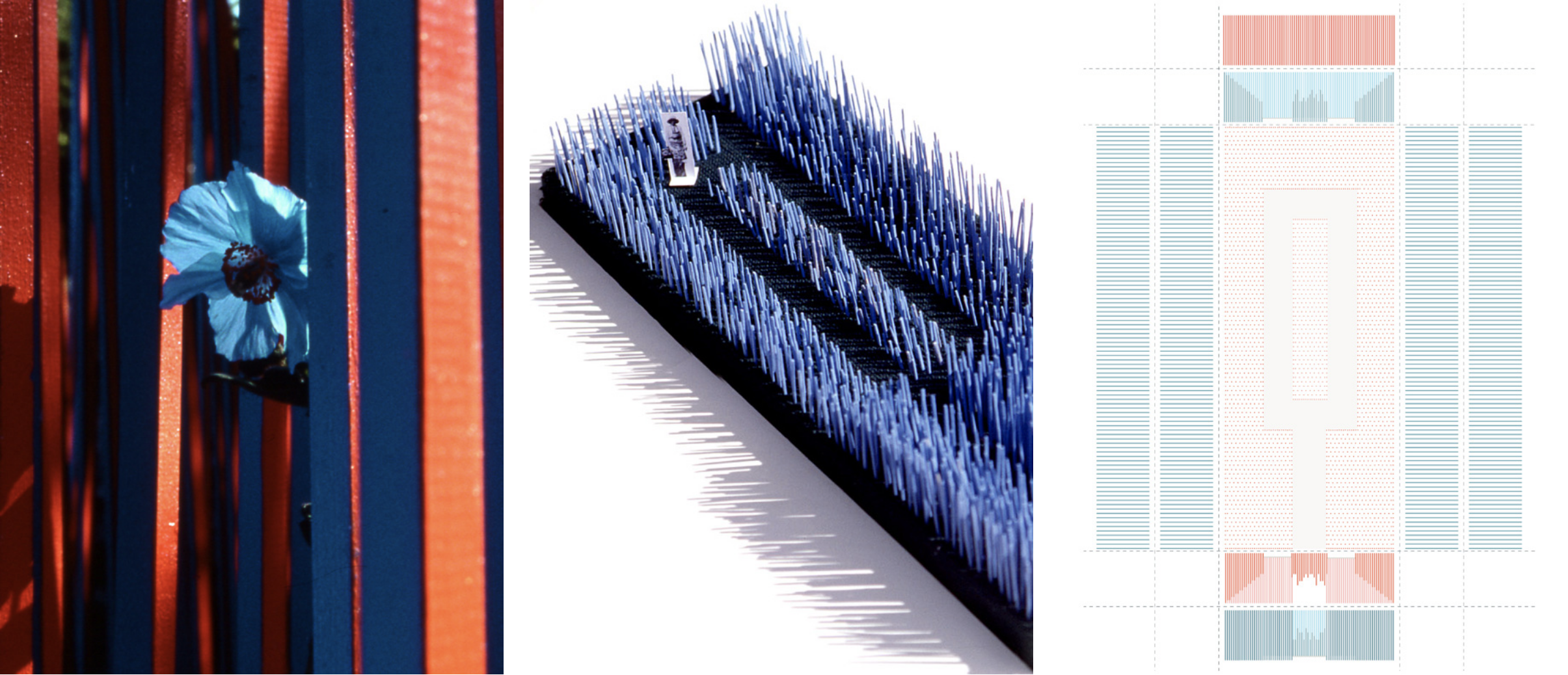Week 7 - Precedent Project Analysis
Part of our weekly task list for Design this week was a personal critique of another 3 precedent projects
The first is Mary Bartelme Park in Chicago. Built on the site of an old infirmary, the Park is a 2.71-acre site in the Chicago Near West Side Community Area. It features a combination of historical and contemporary elements that come together to form an innovative engaging design. The composition comprises 3 strong, diagonal paths intersecting in a one-block park to create distinct, sectional zones. These zones also include a fountain plaza, a children’s play area, a sunken dog park, an open lawn area, a viewing hill and an enclosed seating area.
In the fountain plaza Northwest entry, visitors are welcomed with five stainless steel gates that act as a gateway to the park. Each gate emits a fine mist of vaporized water on hot Chicago days, cooling guests while only using three gallons a minute.
In the fountain plaza Northwest entry, visitors are welcomed with five stainless steel gates that act as a gateway to the park. Each gate emits a fine mist of vaporized water on hot Chicago days, cooling guests while only using three gallons a minute.
The children’s play area offers ADA (Americans with Disabilities Act of 1990) accessibility that allows for all-inclusive, inventive, and non-linear play without the use of traditional play equipment. Dogs can enjoy their uniquely sunken dog park, complete with continuously filling, oversized dog bowls, ramps, ledges, steps, and artificial K9 grass that serves as an exercise area.
The viewing hill is <6 feet high, providing a stunning view of the entire park backdropped with the Chicago skyline. The enclosed seating area is surrounded by native landscaping, providing contemplative space for the community. The park's largest planter bed lies alongside and is raised up by weathering steel walls. Architectural terracotta artefacts salvaged from the original building are embedded within the linear seat walls, linking to the history of the site. The park has also been designed to capture its stormwater by the main permeable paver paths. This water is stored on-site.
The park was named in honour of Mary Bartelme, the first female judge in Illinois, who devoted her life to reforming the treatment of children and women in the court system.
Personally, I quite like the park, while it's more manicured than my typical taste, it's an environmentally conscious site that aims to preserve the history of the site while creating an engaging community area reflective of the surrounding neighbourhood.
The second project is the Shanghai Carpet. Composed of a set of pedestrian plazas, the project was underdone by TLS Landscape Architects for Shui On Land, a flagship land company engaged in developing large-scale city-core development projects and integrated residential development projects in major cities in China. The design aims to show the contrasts and battle between state-of-the-art digital media and the more humble materials of historical daily lives. The majority of the new outdoor spaces are sunken 5 meters below street level. The design concept of the sunken ground involves the idea of digging to uncover a new place, rich with historic, rustic and recycled materials. Organised at the centre is a very compressed and dense representation of this idea. In the form of a graphic “carpet”, the materials are carved as a 200-meter bas-relief art installation, flanked by a forest of timber bamboo.
Personally, I love the concept however I find the execution a bit lacking. The plazas look quite standard and very similar to the shopping centre entrances and building courtyards I grew up seeing in Hong Kong.
The final project is the Blue Stick Garden in Québec. Created by Claude Comier Inc, the Blue Stick Garden debuted in 2000 at the first Métis International Garden Festivalcal. The garden combined two iconic symbols of the Métis garden, the Himalayan Blue Poppy and the famous English mixed border garden ‘Long Walk’. The Blue Stick Garden combines the Victorian garden precedent with a pixelated abstraction designed to create colour shock and draw on the nuances of the blue poppy itself. The aim is to have visitors enter a landscape that feels familiar but leave in an altered state from the unexpected combination of colour and movement. It's a simple yet complex design that is thought to be universal in its appeal. Award-winning, the Blue Stick Garden has been reported to have had an immense effect on public perception of contemporary art installations, as its firmly anchored in the context of traditional gardening practices. It also sparked renewed dialogue about the possibilities of what a garden can be.
Personally, I disagree with the idea that this breaks the boundaries of the garden concept. In my opinion, it is an art installation in a garden, successful in its own right and an engaging and immersive exhibition but to call it a true garden feels pretentious. The name however remains apt, the overwhelming blue successfully portrays the awe and overwhelming sensation of being in a mono-cropped flower field. But to say that it alters the perception of flower fields feels overzealous.












Comments
Post a Comment